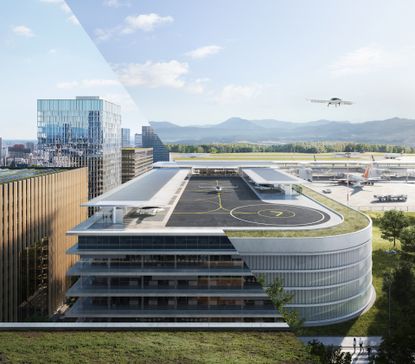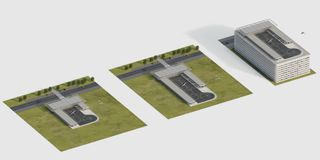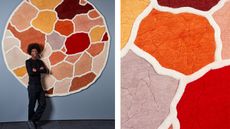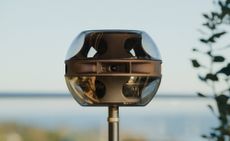Behind the scenes of future electric airports
Lilium's Head of Specs and Architecture Riko Sebbe talks us through the company's answer to aviation of the future

The next wave of electric aviation, big and small, is aimed at speeding us up as well as reducing emissions. However, new infrastructure is needed if it’s to make serious in-roads into our cities and re-shape our habits. Lilium have forged their reputation on an upcoming autonomous eVTOL jet, explicitly designed for urban and suburban operations. But while renders and prototypes of futuristic-looking machines tend to garner the most interest, what’s going on behind the scenes matters so much more.
Riko Sebbe is head of specs and architecture at Lilium, tasked with working out how the company’s Jet can be integrated into the existing landscape. The answer is the ‘vertiport’, an infrastructure system that can be tailor-made for every conceivable of location. Sebbe suggests that the smallest Vertiports could be built for less than €2 million, with the larger structures designed to sit atop buildings, would top out at around €15 million. Lilium promise their Jet will be substantially quieter than current helicopters, another factor it has in its favour.
Ultimately, the Jet is intended as a time-saver, and any terminal structure is designed to get passengers processed and into the five-seater, all-electric, multi-engined craft. Should the age of flying taxis ever get off the ground, Lilium’s low-key, high-speed Vertiport concept could make them a major player. We spoke to Sebbe about the company’s ambitious plans.

Lilium employees working on eVTOL jet
Wallpaper*: The first designs for urban airports date back to the pre VTOL days, but similar issues have always precluded them – cost, safety, noise, etc. How will Lilium’s vertiport be different?
Riko Sebbe: The Lilium vertiports will be different from its predecessors thanks to its modular design. This will allow us to build vertiports more affordably and in a less invasive manner, while still being able to tailor each one around the needs and limitations of each location, including passenger demand, available space, and other community concerns. Much like today’s heliports, future vertiports will have an area specifically dedicated to take-off and landing, surrounded by a safety zone like in a heliport. We continue to work closely with regulators and other industry players to tailor this guidance more directly to eVTOL operations in the future.
W*: Which markets would be the most appropriate to debut this kind of project?
RS: While we haven’t announced the markets in which we first plan to launch just yet, we believe that a number of cities and countries around the world can benefit from affordable, high-speed transport that will allow people to do more with their time while also reducing their environmental impact on the world. In addition to the Lilium Jet being a completely electric form of transport, it will require significantly less infrastructure compared to traditional forms of transport like buses, trains and taxis that require roads, rails and highways which can be costly to the environment. In comparison, the only piece of infrastructure required by the Lilium Jet will be a single vertiport at each point.

Three different vertiport designs using the same modular elements
W*: Clearly a lot of the emphasis here is on the spatial separation of craft and passengers. Is the Lilium better suited to suburban rather than urban situations?
RS: Our focus is on regional air mobility or the connections between cities and within regions, so it was important that the design of the vertiports could suit both suburban and urban environments. We believe that the lean, modular design of the Lilium vertiports allows us to achieve that balance. Developers will be able to place vertiports at existing transport terminals, next to shopping centers, on top of busy car parks or even alongside a suburban residential development, easily and affordably. Having said that, we believe that current aviation regulations will continue to apply in 2025, so despite public imagination, it’s likely that urban air mobility will be limited to specific areas within a city.
Wallpaper* Newsletter
Receive our daily digest of inspiration, escapism and design stories from around the world direct to your inbox
W*: Are there any architectural design elements that reflect the design of the craft itself?
RS: The design of the Lilium Jet and its vertiports is based on the same principles – simplicity, efficiency and optimal performance. The design of the Lilium Jet is inspired by simplicity – it has no tail, no rudder, no propellers, no gearbox and only one moving part in the engine to allow for greater efficiency. In much the same way, the design of our vertiport is simple and focused on what our passengers care about – getting from point A to point B quickly and efficiently.
INFORMATION
Jonathan Bell has written for Wallpaper* magazine since 1999, covering everything from architecture and transport design to books, tech and graphic design. He is now the magazine’s Transport and Technology Editor. Jonathan has written and edited 15 books, including Concept Car Design, 21st Century House, and The New Modern House. He is also the host of Wallpaper’s first podcast.
-
 Pininfarina Battista Reversario is a new one-off electric hypercar
Pininfarina Battista Reversario is a new one-off electric hypercarThe all-electric Pininfarina Battista Reversario is joining its aesthetic inverse in an ultra-select car collector’s garage. We take a look at a car built to a very precise order
By Jonathan Bell Published
-
 Fernando Jorge’s fluid diamond earrings show his curve appeal
Fernando Jorge’s fluid diamond earrings show his curve appealDiscover Brazilian jewellery designer Fernando Jorge's snake-like silhouettes and graphic shapes
By Hannah Silver Published
-
 Abreham Brioschi debuts Ethiopia-inspired rugs for Nodus
Abreham Brioschi debuts Ethiopia-inspired rugs for NodusAbreham Brioschi teams up with luxury rug experts Nodus to translate visions from his heritage into a tactile reality
By Ifeoluwa Adedeji Published
-
 ABBA Voyage director Baillie Walsh on songs, sequins, and virtual spaces
ABBA Voyage director Baillie Walsh on songs, sequins, and virtual spacesBaillie Walsh, the director behind ABBA Voyage, one of the most advanced entertainment spectacles ever, tells Wallpaper* how the magic happens, ABBAtars and all
By Jonathan Bell Last updated
-
 Inside Apple Park: first look at the design team shaping the future of tech
Inside Apple Park: first look at the design team shaping the future of techGlobal exclusive! Led by Evans Hankey and Alan Dye, the Apple Design Team holds enormous sway over our evolving relationship with technology. Opening the doors to their studio at Apple Park in Cupertino for the first time, they offered us a deep dive into the working processes behind their latest creations
By Jonathan Bell Last updated
-
 Vodafone Smart Tech's Tom Guy on the Internet of Things
Vodafone Smart Tech's Tom Guy on the Internet of ThingsAs more and more people want smart tech to offer simpler solutions to everyday problems, Vodafone Smart Tech is here to stay
By Jonathan Bell Last updated
-
 Microsoft’s new Windows 11 opens up a new era of OS design
Microsoft’s new Windows 11 opens up a new era of OS design‘Windows is the largest Swiss Army knife you can imagine,’ says Ralf Groene, head of design for Windows & Devices
By Jonathan Bell Last updated
-
 Syng is rethinking the art of speaker design
Syng is rethinking the art of speaker designChristopher Stringer and Damon Way created Syng in just three years. Here's how.
By Jonathan Bell Published
-
 Fender looks forwards with a new hybrid guitar design
Fender looks forwards with a new hybrid guitar designJustin Norvell, Executive Vice President of Fender Products, discusses the company’s latest product and what it means for the future of guitar
By Jonathan Bell Last updated
-
 Yves Béhar and Dr Harvey Karp are rocking World Sleep Day
Yves Béhar and Dr Harvey Karp are rocking World Sleep DayCreated by paediatrician Dr Harvey Karp, and given a pared-back design by Yves Béhar, Snoo is a baby sleep solution we can all rest easy with
By Tilly Macalister-Smith Last updated
-
 Samsung's modular approach brings bespoke design to the kitchen
Samsung's modular approach brings bespoke design to the kitchenSamsung is looking to the future of home goods
By Jonathan Bell Last updated